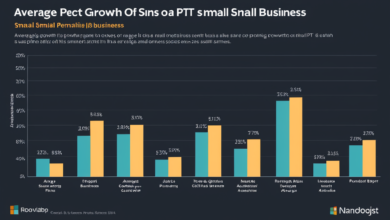easy:cmz3e8shrom= chicano drawings

Chicano art, a dynamic and multifaceted genre rooted in the Mexican-American experience, has significantly influenced the broader art world. Among the various forms of expression within this movement,
Chicano drawings stand out for their powerful imagery, vibrant colors, and deeply meaningful narratives. The term “Chicano” refers to people of Mexican descent born or living in the United States. The art they produce often addresses cultural identity, social justice, and the historical struggles faced by Mexican-Americans.
The Origins of Chicano Art
Chicano art emerged in the 1960s during the Chicano Civil Rights Movement, a time when Mexican-Americans began to assert their identity and rights in a society that often marginalized them. This movement aimed to address issues such
as discrimination, economic inequality, and political disenfranchisement. Artists used their work to reflect their cultural heritage and the social injustices they faced.
In its early stages, Chicano art was characterized by murals and large-scale public works, but drawing played an essential role in developing the movement’s aesthetics and ideas. Drawings often served as studies for murals or standalone pieces, conveying the same themes of identity, resistance, and community.
Themes in Chicano Drawings
Chicano drawings frequently explore a variety of themes that resonate with the experiences of Mexican-Americans. Some prominent themes include:

1. Cultural Identity
Cultural identity is at the core of Chicano art. Many artists draw inspiration from traditional Mexican art forms, incorporating elements like Aztec and Mayan motifs. They celebrate their heritage
while navigating the complexities of living in a predominantly Anglo society. This duality often manifests in drawings that juxtapose traditional imagery with contemporary themes, creating a dialogue between past and present.
2. Social Justice
The fight for social justice is another recurring theme in Chicano drawings. Artists have used their work to comment on issues such as police brutality, immigration policies, and economic disparities.
These drawings often serve as powerful visual critiques of systemic oppression, calling attention to the struggles faced by marginalized communities. For instance, images of protest or depictions of everyday life for Mexican-Americans can evoke empathy and provoke thought.
3. Spirituality and Mythology
Many Chicano artists draw upon spiritual beliefs and mythology in their work. They often reference religious figures, such as the Virgin of Guadalupe,
or integrate indigenous symbols that reflect their cultural background. These spiritual elements contribute to the richness of Chicano drawings, adding layers of meaning that connect to both personal and collective histories.
Techniques and Styles
Chicano artists employ various techniques and styles in their drawings, often blending traditional methods with contemporary practices. Here are some common techniques:
1. Ink and Pencil Drawings
Many Chicano artists utilize ink and pencil to create intricate drawings. These techniques allow for precise line work and detailed imagery, often resulting in visually striking pieces. The use of black ink against vibrant colors enhances the visual impact, creating a bold contrast that captures the viewer’s attention.
2. Mixed Media
Mixed media is a hallmark of Chicano art, allowing artists to experiment with different materials and techniques. This approach can include combining drawing with painting, collage, or digital elements. The use of mixed media can create dynamic compositions that reflect the complexities of the Chicano experience.
3. Graphic Styles
The influence of comic book art and graphic design is evident in many Chicano drawings. Artists often incorporate bold outlines, vivid colors, and stylized characters reminiscent of comic book illustrations. This graphic style appeals to a younger audience and connects to the pop culture landscape while still addressing serious themes.
Notable Chicano Artists
Several Chicano artists have made significant contributions to the world of drawing and have become influential figures in the art community. Some of these artists include:
1. José Guadalupe Posada
José Guadalupe Posada is often regarded as the father of Mexican printmaking and a significant influence on Chicano art. His iconic calaveras (skeletons) and social commentary reflected the struggles of the lower class in Mexico. Posada’s work laid the groundwork for many contemporary Chicano artists who draw inspiration from his style and themes.
2. Carlos Almaraz
Carlos Almaraz was a prominent figure in the Chicano art movement, known for his vibrant and emotional drawings. His work often explores themes of identity,
spirituality, and social issues. Almaraz’s unique style combined elements of abstraction with figurative representation, making his drawings both visually captivating and thought-provoking.
3. Favianna Rodriguez
Favianna Rodriguez is a contemporary Chicano artist and activist whose work addresses issues of immigration, social justice, and women’s rights. Her drawings often feature bold colors and graphic elements,
conveying powerful messages about the struggles faced by marginalized communities. Rodriguez’s art has gained national recognition for its impactful visuals and social commentary.

The Impact of Chicano Drawings Today
Chicano drawings continue to evolve, reflecting the changing dynamics of Mexican-American identity and the broader socio-political landscape.
Today’s artists are increasingly embracing digital mediums, allowing them to reach wider audiences and engage with contemporary issues in innovative ways. Social media platforms provide a space for artists to share their work, connect with others, and spark conversations about cultural identity and social justice.
Moreover, Chicano art has gained recognition within mainstream art institutions, with exhibitions and galleries showcasing the contributions of Chicano artists. This increased visibility has helped elevate the status of Chicano drawings, allowing them to be appreciated not just as cultural artifacts but as vital components of the global art narrative.
Conclusion
Chicano drawings represent a rich tapestry of cultural expression, social commentary, and artistic innovation. They reflect the complexities of the Mexican-American experience, celebrating heritage while addressing pressing social issues.
As the Chicano art movement continues to evolve, the impact of these drawings resonates, inspiring future generations to explore their identities and advocate for justice through art. The legacy of Chicano drawings is a testament to the power of creativity in fostering understanding, empathy,
and social change. Whether through intricate ink drawings or vibrant mixed media pieces, Chicano art remains a vital force in contemporary art, inviting all to engage with its profound narratives and vibrant aesthetics.




